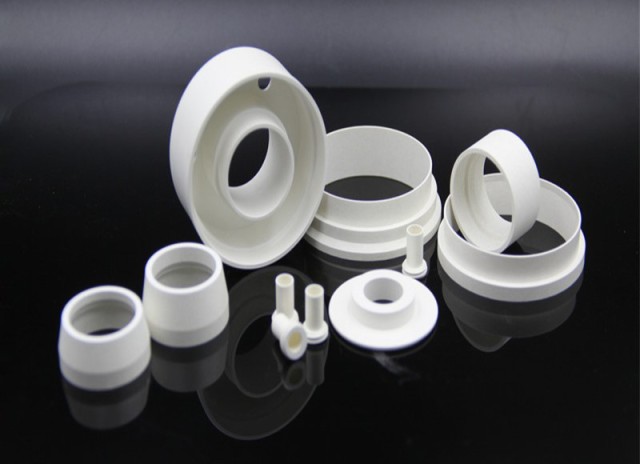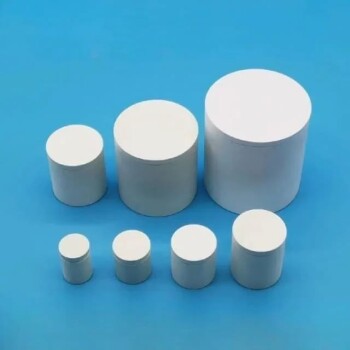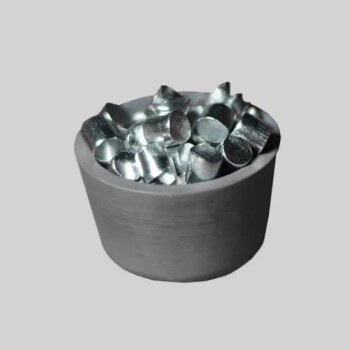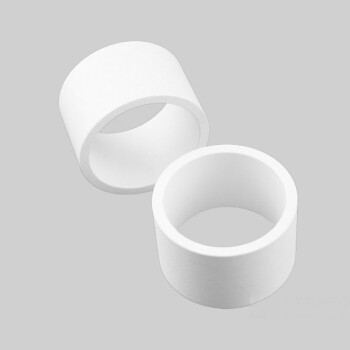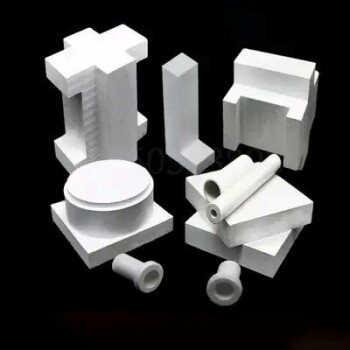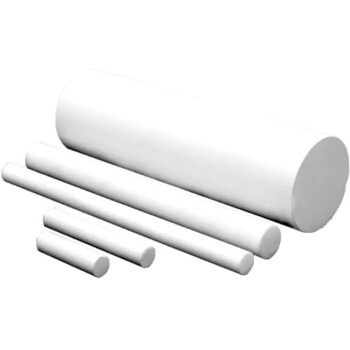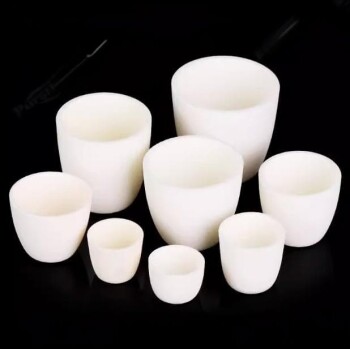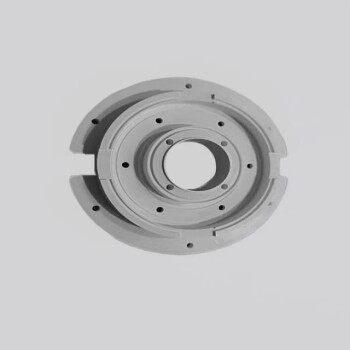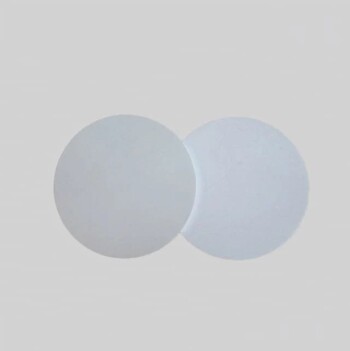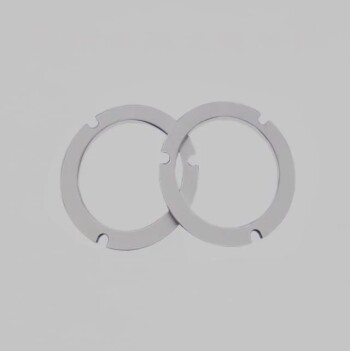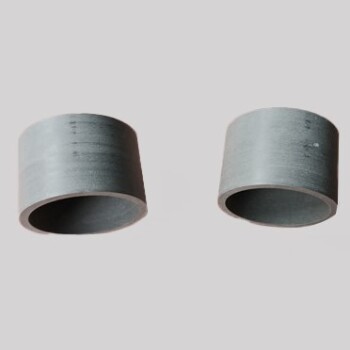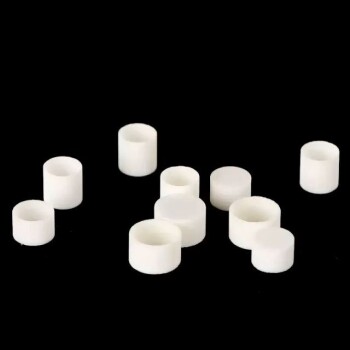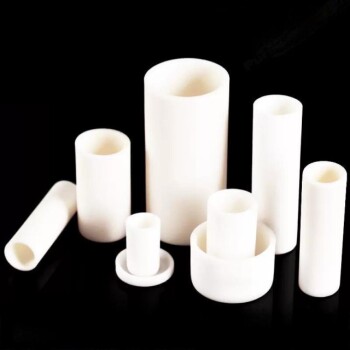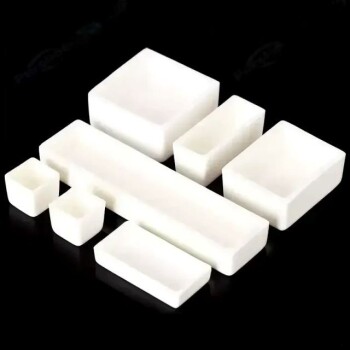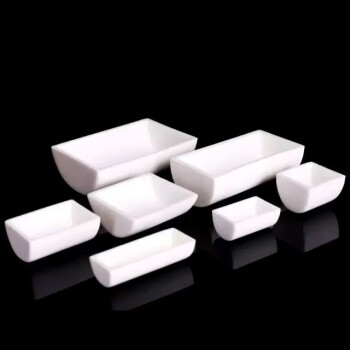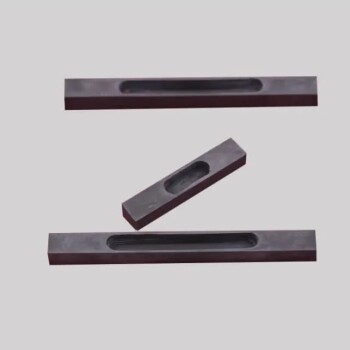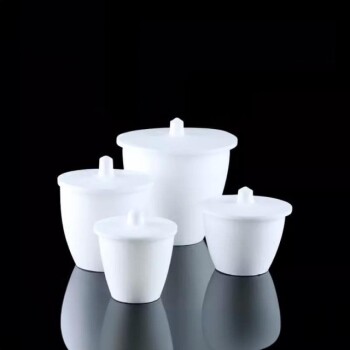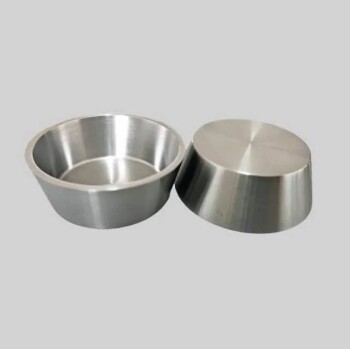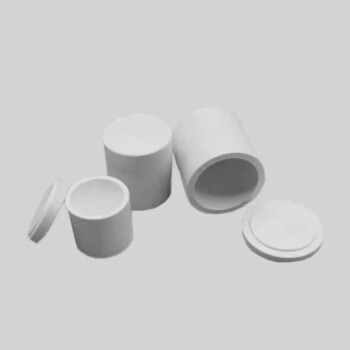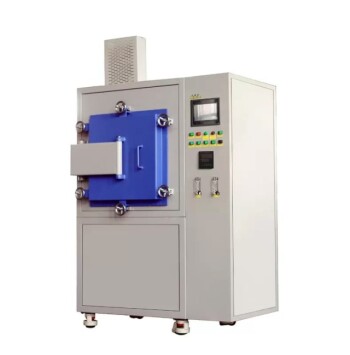사용 조건
작동 온도
질화붕소 도가니는 광범위한 온도에서 탁월한 성능을 발휘하여 고온 응용 분야에서 다용도로 사용할 수 있습니다. 이 도가니는 1800°C의 높은 온도에서 진공 상태로 사용할 수 있어 산소가 없는 환경이 필요한 공정에 특히 유용합니다. 또한 불활성 대기로 보호할 경우 최대 2000°C의 온도에서도 견딜 수 있습니다.
최적의 성능과 긴 서비스 수명을 위해 질소 또는 아르곤 분위기를 사용하는 것이 좋습니다. 이러한 불활성 가스는 질화붕소 도가니 를 산화로부터 보호할 뿐만 아니라 주변 환경의 반응성 원소로 인한 잠재적 오염을 방지합니다. 가스 선택은 질화붕소 도가니의 내구성과 수명에 직접적인 영향을 미치기 때문에 매우 중요합니다. 질화붕소 도가니 .
| 조건 | 최대 온도 | 권장 분위기 |
|---|---|---|
| 진공 상태 | 1800°C | 없음 |
| 대기 중 | 2000°C | 질소 또는 아르곤 |
이러한 작동 조건을 준수함으로써 사용자는 질화붕소 도가니의 활용도와 수명을 극대화할 수 있습니다. 질화붕소 도가니 다양한 고온 응용 분야에서 신뢰할 수 있는 선택이 될 수 있습니다.
열충격 저항
질화붕소 도가니는 질화붕소 도가니 는 높은 열전도율, 낮은 열팽창, 견고한 강도에서 비롯된 특성으로 뛰어난 열충격 저항성을 자랑합니다. 이러한 내열성은 급격한 온도 변화가 빈번한 환경에서 매우 중요한데, 이러한 조건은 재료에 상당한 열 스트레스를 유발할 수 있기 때문입니다. 이러한 스트레스에 취약한 금속이나 플라스틱과 달리 질화붕소와 같은 세라믹은 열 충격을 견디는 능력이 뛰어난 것으로 잘 알려져 있습니다.
극심한 온도 변화를 겪을 때도 도가니는 놀라운 내구성을 보여줍니다. 예를 들어, 1000°C까지 가열한 후 20분 동안 그 온도를 유지한 다음 공기를 통해 즉시 냉각해도 균열이 발생하지 않습니다. 마찬가지로 1500°C에서 실온으로 급속 냉각하는 과정도 구조적 무결성을 손상시키지 않고 최대 100회까지 반복할 수 있습니다.
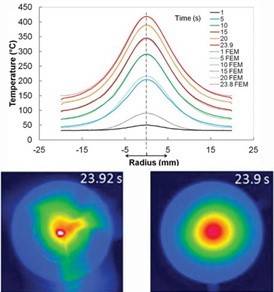
이러한 탁월한 열충격 저항성은 소재의 고유한 특성 덕분입니다. 열전도율이 높아 도가니 전체에 열이 고르게 분산되어 균열을 유발할 수 있는 국부적인 핫스팟을 방지합니다. 열팽창 계수가 낮기 때문에 온도 변화에 따른 치수 변화가 최소화되어 열 응력에 대한 저항력이 더욱 향상됩니다. 또한 도가니의 강도가 높기 때문에 열 순환과 관련된 기계적 응력을 파손 없이 견딜 수 있습니다.
요약하자면, 질화붕소 도가니는 질화붕소 도가니 의 열충격 저항성은 빈번하고 빠른 온도 변화가 필요한 애플리케이션에 이상적인 선택이며, 신뢰성과 수명을 모두 제공합니다.
주의 사항
산화 위험
질화붕소는 900°C 이상에서 산소에 노출되면 산화되기 쉬우므로 소재의 잠재적 성능 저하를 초래할 수 있습니다. 이 임계 온도는 고온 작업 시 제어된 환경을 유지하는 것이 얼마나 중요한지를 강조합니다. 이러한 위험을 완화하려면 질소 또는 아르곤과 같은 보호 분위기를 사용하는 것이 좋습니다. 질화붕소 도가니 .
| 온도 범위 | 산화 위험 | 완화 전략 |
|---|---|---|
| 900°C 이하 | 낮음 | 특별한 예방 조치 필요 없음 |
| 900°C - 1200°C | 보통 | 보호 대기(N₂, Ar) 사용 |
| 1200°C 이상 | 높음 | 산소 노출을 엄격하게 제어하고 보호 가스를 지속적으로 사용해야 합니다. |
온도가 1200°C를 초과하는 환경에서는 산화 위험이 크게 증가합니다. 산화를 방지하고 무결성을 유지하기 위해서는 지속적인 모니터링과 불활성 가스의 사용이 필수적입니다. 질화붕소 도가니 .

보관 및 유지보수
보관 시 질화 붕소 도가니 를 보관할 때는 습기가 많은 환경을 피하는 것이 중요합니다. 습기는 도가니의 무결성과 성능을 저하시킬 수 있습니다. 이러한 이유로 밀폐 보관 를 사용하여 습기 및 기타 성능 저하를 유발할 수 있는 환경 요인으로부터 도가니를 보호할 것을 적극 권장합니다.
도가니를 세척할 때는 물을 사용하지 않는 방법을 사용해야 합니다. 물은 도가니 재료와 반응하여 잠재적인 손상을 일으킬 수 있습니다. 대신 사포 또는 이와 유사한 연마재를 사용하여 더러운 표면을 청소해야 합니다. 이 방법은 도가니를 손상시키지 않으면서도 쌓인 먼지나 잔여물을 효과적으로 제거할 수 있습니다.
다른 도가니 대체
질화붕소 도가니 은 기존 도가니를 대체할 수 있는 다목적 제품으로 다양한 산업 분야에서 선호되는 제품입니다. 다음을 효과적으로 대체할 수 있습니다. 텅스텐 , 몰리브덴, 알루미늄 산화물 및 흑연 도가니 를 효과적으로 대체할 수 있으며, 각 도가니에는 고유한 한계와 과제가 있습니다.
비교 이점
| 전통적인 도가니 | 한계/과제 | BN 도가니의 장점 |
|---|---|---|
| 텅스텐 | 고밀도 및 취성, 높은 융점으로 인해 제한됨. | 밀도가 낮고 열충격 저항성이 우수합니다. |
| 몰리브덴 | 산화와 취성에 취약합니다. | 산화에 강하고 구조적 무결성을 유지합니다. |
| 알루미늄 산화물 | 열충격과 균열이 발생하기 쉽습니다. | 열충격에 강하고 내구성이 뛰어납니다. |
| 흑연 | 쉽게 산화되며 녹는점이 낮아 제한적입니다. | 고온 안정성, 산화 최소화. |
BN 도가니의 주요 이점
- 열 안정성: 질화붕소 도가니 은 1800°C의 진공 상태와 2000°C의 대기 보호 환경에서 작동할 수 있어 고온 애플리케이션에 적합합니다.
- 내화학성: 산소로부터 보호할 경우 900°C 이상의 산화에 강해 사용 수명이 길어집니다.
- 호환성: 철 및 비철 금속, 유리, 실리콘 및 다양한 합금을 포함한 다양한 소재와 호환됩니다.
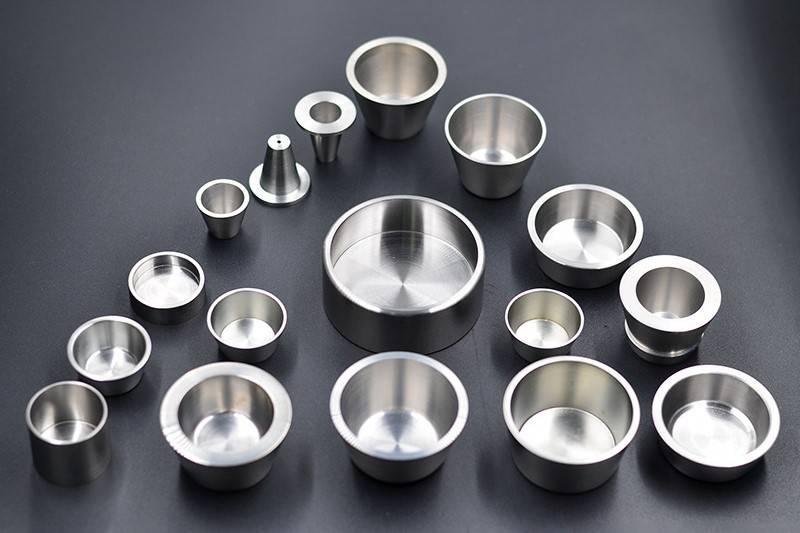
이러한 장점을 활용하여 질화붕소 도가니 은 고성능 도가니를 필요로 하는 산업에 견고하고 신뢰할 수 있는 솔루션을 제공합니다.
호환 가능한 재료
철 및 비철 금속
질화붕소 도가니 은 다양한 철 및 비철 금속과 탁월한 호환성을 보여 다양한 산업 분야에서 다용도로 사용할 수 있습니다. 이러한 금속에는 다음이 포함됩니다:
-
철 금속:
- 철
- 스테인리스 스틸
- 니켈
-
비철 금속:
- 구리
- 비스무트
- 게르마늄
- 알루미늄
- 안티몬
- 주석
- 카드뮴
- 납
- 아연
- 황동
- 인듐
- 마그네슘
이러한 호환성 덕분에 도가니의 무결성이나 금속의 순도를 손상시키지 않고 다양한 금속 가공 공정에서 도가니를 사용할 수 있습니다. 철 금속과 비철 금속을 모두 취급할 수 있다는 것은 질화 붕소 도가니 야금 산업에서.
유리 및 실리콘
질화붕소 도가니 은 다양한 재료, 특히 유리 및 실리콘 가공과 같은 고온 응용 분야에서 일반적으로 사용되는 재료와 탁월한 호환성을 보여줍니다. 이 도가니는 다음과 같은 혹독한 취급을 견딜 수 있도록 설계되었습니다. 유리 용융 을 포함한 나트륨 유리 와 크라이오라이트 를 포함하여 다양한 유리 제품 생산에 필수적인 구성 요소입니다. 또한 다음과 완벽하게 호환됩니다. 실리콘 과 완벽하게 호환되어 용융 및 주조 공정에서 실리콘 잉곳의 순도와 무결성이 손상되지 않도록 보장합니다.
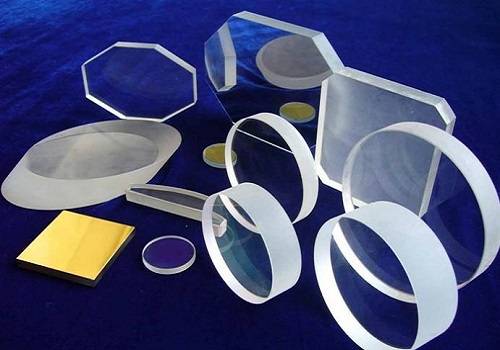
또한 질화 붕소 도가니 는 용융 염 용융 염 슬래그 불화물 와 같이 야금 공정에서 자주 사용되는 용융 염을 잘 관리합니다. 이러한 호환성은 다양한 재료로 확장되어 질화붕소 도가니 은 고온 도가니 솔루션이 필요한 산업에 다용도로 사용할 수 있습니다.
합금
질화붕소 도가니 은 다양한 합금과 뛰어난 호환성을 보여주기 때문에 고온 응용 분야에 다용도로 사용할 수 있습니다. 호환 가능한 합금의 대표적인 두 가지 예는 다음과 같습니다. FE-CO-NI-SI 와 CO-ZR-NB 합금입니다.
그리고 FE-CO-NI-SI 합금은 일반적으로 철(Fe), 코발트(Co), 니켈(Ni), 실리콘(Si)을 포함하는 합금으로 강도와 부식에 대한 저항성이 뛰어난 것으로 알려져 있습니다. 이 합금은 특히 다음에 사용하기에 적합합니다. 질화붕소 도가니 에 특히 적합하며, 극한의 온도에서도 구조적 무결성을 유지할 수 있기 때문입니다. 도가니는 합금에 안정적인 환경을 제공하여 재료의 특성을 손상시킬 수 있는 부작용을 방지합니다.
마찬가지로 CO-ZR-NB 코발트(Co), 지르코늄(Zr), 니오븀(Nb)으로 구성된 합금도 다음과 같은 용도로 사용할 수 있는 우수한 후보입니다. 질화 붕소 도가니 . 이 합금은 높은 융점과 우수한 기계적 특성으로 높이 평가되며, 이는 가공시 보존됩니다. 질화 붕소 도가니 . 도가니의 불활성 특성으로 인해 합금이 도가니 재료의 영향을 받지 않아 정밀하고 제어된 가공이 가능합니다.
요약하면 질화붕소 도가니 은 두 가지 모두와 호환성이 높습니다. FE-CO-NI-SI 및 CO-ZR-NB 합금과 호환성이 뛰어나 재료 무결성 및 공정 제어가 가장 중요한 다양한 고온 애플리케이션에 이상적입니다.
호환되지 않는 재료
산화 화합물
질화붕소 도가니 은 여러 산화 화합물과 반응성이 높아 도가니의 성능을 크게 저하시키고 잠재적인 고장을 일으킬 수 있습니다. 특히 다음과 같은 화합물과 접촉할 때는 도가니를 매우 주의해서 취급해야 합니다. 삼산화 안티몬 , 크롬 헵타옥사이드 , 삼산화 몰리브덴 , 삼산화 비소 및 티타늄 카바이드 . 이러한 화합물은 도가니의 구조적 무결성과 성능을 손상시키는 심각한 화학 반응을 일으킬 수 있습니다.
| 호환되지 않는 화합물 | 잠재적 반응 |
|---|---|
| 삼산화 안티몬 | 격렬하게 반응하여 재료의 빠른 침식 및 손실을 초래합니다. |
| 크롬 헵타옥사이드 | 질화붕소에 부식성이 강한 크롬 화합물을 형성할 수 있습니다. |
| 삼산화몰리브덴 | 도가니 벽의 심각한 산화와 약화를 유발합니다. |
| 삼산화 비소 | 휘발성 비소 화합물을 형성하여 도가니를 손상시킵니다. |
| 티타늄 카바이드 | 질화붕소와 반응하여 질화티타늄을 형성하고, 질화붕소와 추가로 반응하여 구조적 손상을 일으킬 수 있습니다. |
이러한 산화 화합물에 대한 노출을 피하는 것은 제품의 수명과 효과를 유지하려면 질화붕소 도가니 . 적절한 취급 및 보관 프로토콜에는 이러한 위험 물질과의 접촉을 방지하기 위한 엄격한 조치가 포함되어야 합니다.
고납 함유 유리질 에나멜
납 함유량이 높은 유리질 에나멜은 다음과 함께 사용할 때 특별한 문제가 발생합니다. 질화붕소 도가니 . 800°C~950°C 범위의 온도에서 이러한 재료는 다음과 같습니다. 공기 중에서 호환되지 않습니다 . 납이 많이 함유된 유리질 에나멜과 질화붕소 도가니 의 상호작용은 바람직하지 않은 반응을 일으켜 두 재료의 무결성을 손상시킬 수 있습니다.
그러나 이러한 비호환성이 보편적인 것은 아닙니다. 다음에 노출될 경우 질소 또는 불활성 가스 에 노출되면 납 함유량이 높은 유리질 에나멜은 다음과 반응하지 않습니다. 질화 붕소 도가니 . 이것은 문제가 주로 공기의 일반적인 구성 요소 인 산소가있을 때 발생한다는 것을 시사합니다. 따라서 잠재적 인 위험을 완화하려면 작동하는 것이 좋습니다. 질화붕소 도가니 고온에서 납 함유량이 높은 유리질 에나멜을 취급할 때는 산소가 없는 환경에서 작동하는 것이 좋습니다.
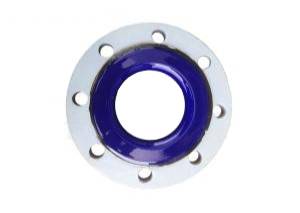
요약하자면, 납 함유량이 높은 유리질 에나멜과 질화붕소 도가니 는 특정 조건에서 공존할 수 있으므로 운영 환경을 신중하게 고려하는 것이 중요합니다. 불활성 분위기를 유지하면 부작용을 방지하여 두 물질을 안전하고 효과적으로 사용할 수 있습니다.
인산붕소 및 인산칼륨
사용을 고려할 때 질화붕소 도가니 의 사용을 고려할 때는 심각한 성능 저하를 일으킬 수 있는 물질에 대해 알고 있어야 합니다. 인산붕소(BPO₄)는 특히 고온, 특히 약 1400°C에서 BN의 침식을 시작하기 때문에 특히 해롭습니다. 이러한 침식은 장기간 노출 시 도가니의 구조적 약화 및 잠재적 고장으로 이어질 수 있습니다.
마찬가지로 인산칼륨(K₃PO₄)은 800~900°C 사이에서 BN과 반응하여 약간 낮은 온도에서 위협을 가합니다. 이 반응은 도가니의 무결성을 손상시킬 뿐만 아니라 화학 성분을 변화시켜 고온 응용 분야에서 효과가 떨어집니다.
이러한 위험을 완화하기 위해서는 질화붕소 도가니 특히 앞서 언급한 온도에서 인산붕소 또는 인산칼륨이 존재하는 환경에서는 질화붕소 도가니를 사용하지 않는 것이 좋습니다. 고온 공정의 수명과 안전을 보장하기 위해 대체 도가니 재료 또는 보호 조치를 고려해야 합니다.
이산화티타늄
사용 시 질화붕소 도가니 를 사용할 때는 다양한 재료, 특히 고온에서 약간의 침식을 일으킬 수 있는 재료와의 호환성을 파악하는 것이 중요합니다. 그러한 재료 중 하나가 이산화티타늄입니다.
일반적인 산업용 화학 물질인 이산화티타늄은 다음과 같은 물질에 경미한 침식을 일으킬 수 있습니다. 질화붕소 도가니 에 경미한 침식을 일으킬 수 있습니다. 이러한 침식은 이산화티타늄과 질화붕소 구조 사이의 화학적 상호 작용으로 인해 발생할 수 있으며, 시간이 지남에 따라 도가니의 무결성이 점진적으로 저하될 수 있습니다.
이 문제를 완화하려면 이산화티타늄의 노출을 제한하는 것이 좋습니다. 질화붕소 도가니 의 이산화티타늄 노출을 제한하는 것이 좋습니다. 또한 정기적인 검사 및 유지보수를 통해 침식 징후를 조기에 파악하여 적시에 교체 또는 수리하여 도가니의 수명과 효율성을 보장할 수 있습니다.
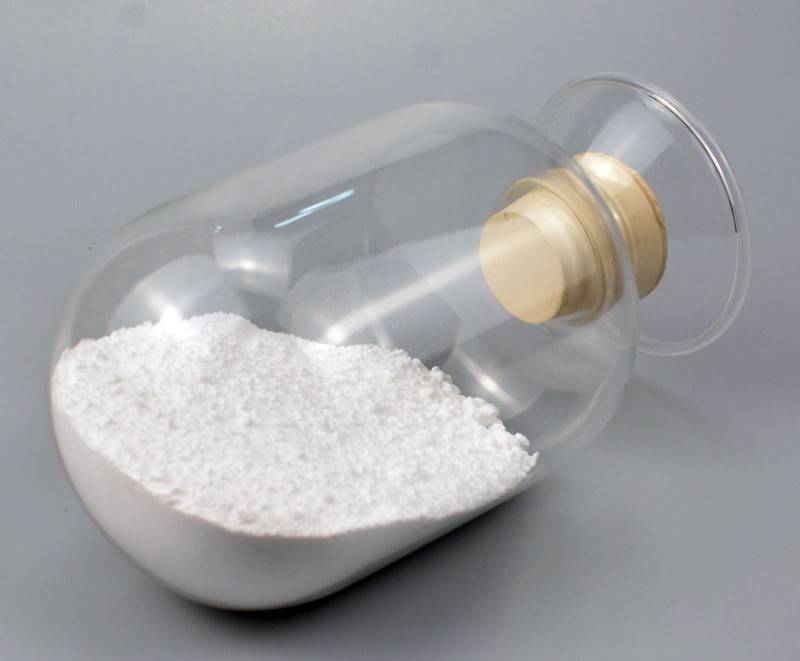
| 재질 | 호환성 |
|---|---|
| 이산화티타늄 | 고온에서 약간의 침식 |
이산화티타늄과 같은 소재의 침식 가능성을 이해하는 것은 다음과 같은 제품의 성능과 수명을 유지하는 데 필수적입니다. 질화붕소 도가니 의 성능을 유지하는 데 필수적입니다.
알칼리 및 염소 가스
질화붕소 도가니 는 특정 조건, 특히 고온의 농축 또는 용융 알칼리 및 고온 염소 가스에서 특정 반응성을 나타냅니다. 이러한 물질에 노출되면 도가니는 구조적 무결성과 성능에 영향을 줄 수 있는 중대한 화학 반응을 겪을 수 있습니다.
알칼리와의 반응성
수산화나트륨(NaOH) 및 수산화칼륨(KOH)과 같은 고온의 농축 또는 용융 알칼리는 다음과 같은 물질에 상당한 위험을 초래합니다. 질화붕소 도가니 . 이러한 알칼리는 도가니 재료에 침투하여 성능 저하와 잠재적 고장을 일으킬 수 있습니다. 반응의 심각성은 고온에 의해 악화되며, 이는 알칼리와 질화붕소 간의 화학적 상호작용을 가속화할 수 있습니다.
염소 가스와의 반응성
마찬가지로, 뜨거운 염소 가스는 다음과 같은 부작용을 유발할 수 있습니다. 질화붕소 도가니 . 염소 가스는 가열되면 도가니 재료와 반응하여 도가니 벽의 침식 및 약화를 일으킬 수 있습니다. 이러한 반응은 고온 공정에서 염소 가스를 사용하는 산업 환경에서 특히 우려되는 문제입니다.
| 재료 | 반응성 |
|---|---|
| 고온 농축 알칼리 | 화학 물질 침투로 인한 심각한 성능 저하 및 잠재적 고장. |
| 고온 용융 알칼리 | 고온에서 화학적 상호 작용이 가속화됩니다. |
| 고온 염소 가스 | 화학 반응으로 인한 도가니 벽의 침식 및 약화. |
이러한 반응을 이해하는 것은 안전하고 효과적인 사용을 보장하기 위해 매우 중요합니다. 질화 붕소 도가니 . 작업자는 도가니가 이러한 호환되지 않는 물질에 노출되지 않도록 적절한 예방 조치를 취하여 도가니의 무결성을 유지하고 수명을 연장해야 합니다.
관련 제품
- 질화붕소(BN) 도가니 - 인 분말 소결
- 전자빔 증착 코팅 도전성 질화붕소 도가니(BN Crucible)
- 질화붕소(BN) 세라믹 튜브
- 질화붕소(BN) 세라믹 부품
- 질화붕소(BN) 세라믹 로드
